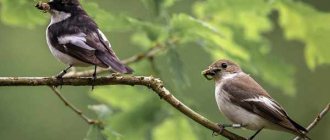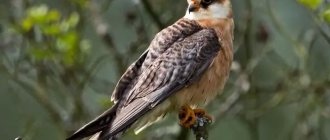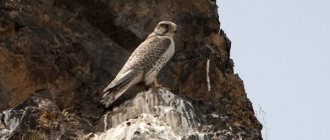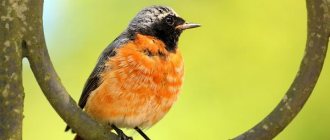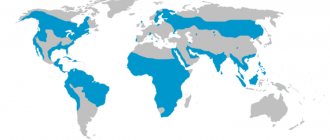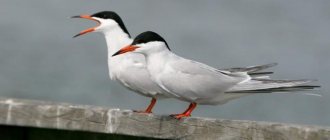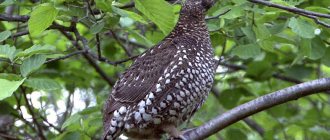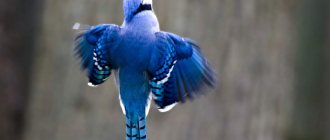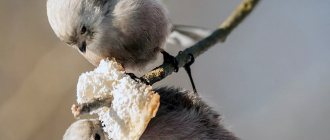The little bird, the gray flycatcher, has not earned its name in vain. It is found in summer cottages and plots of land, in city parks and squares, botanical gardens, where it catches flies and other insects. Despite such closeness of the bird to humans, people know little about it. We have collected interesting and educational points about the life of flycatchers to tell you about them in this article.
Who is the flycatcher
The flycatcher from the order Passeriformes is similar in size to its counterpart, but with a different color of plumage. There are about fifty subfamilies, which differ in details, but in general have a gray-brown color, dark and white spots.
The body length does not exceed 15 cm, the wings are 20-25 cm, and the weight is 17 g. The bird’s beak is special. Its shape is quite wide, and at the end there are special hairs that help capture insects in flight.
The average lifespan of a bird is 7 years.
Description
- Flycatchers are quite colorful and beautiful. They grow up to 15 cm in length along the body. There are definitely external similarities with sparrows. But the final characteristics depend on the time of year and other aspects.
- As a rule, these individuals cannot boast of a wide variety of colors in their plumage. Mostly gray, brown, brownish, black and white shades can be distinguished. However, some birds from the flycatcher family change during the mating season and can be red, blue, yellow, or orange.
- The wingspan ranges from 18 to 20 cm. The bird looks very beautiful in flight. Its elongated wings look advantageous against the background of its compact body. The wings are narrowed in format.
- The legs are weak and thin, so pets cannot run fast. But they are quite good at clinging to branches to get something from a tree. This becomes possible due to the presence of clawed fingers.
- The beak is strong and has a unique structure. A bump can be seen in the area above the beak; the beak itself is dense and strong and can split a cone. In the extreme parts there is very short plumage, similar to bristles. In some flycatchers, these feathers cover the nostrils. The tail is shortened, straight in structure, ending in a straight cut.
- In terms of distribution, the birds are found in different climate zones. They can be found in the United States of America, Europe, Asia (South, Central). These representatives of the order also live in the Caucasus and can fly to Africa.
- Birds are divided into several categories. The first of them leave their native expanses and go to warmer regions for the winter, the second remain in place because the climate is more comfortable for them. When winter begins, individuals living in northern latitudes already feel great in Syria, India, Pakistan and Iraq.
pied flycatcher - description, habitat
Popular types
Among the numerous species of the flycatcher family, several main ones can be distinguished.
Pied Flycatcher: The body of males is bright black, only the back and forehead are white. The wings and tail are dark brown with white stripes and spots. This species can be found in the forests of Europe.
The gray flycatcher (common) has a faded color compared to its fellows, which is why it received its second name. The feathers run along the body in a gradient: dark brown on top, and very light gray below.
The taiga flycatcher or mugimaki flycatcher most often lives in the taiga, differs from pieds in the color of the breast: in males it is bright red, in females it is light yellow.
The broad-billed flycatcher is similar to the gray flycatcher, only the plumage has an olive tint. For the winter, the broad-billed bird flies to Asia.
White-throated Flycatcher: The black head of the male is distinguished by a bright white patch on the forehead and throat. The back and wings are also black, but everything else, including the tail, is white. Females do not have pronounced spots on the forehead and throat, and the back and wings are more gray.
Lifestyle
- Often the individuals in question live in small forests and dense thickets. In addition, birds can often be found in forest areas.
- In most cases, the individuals in question choose open areas such as clearings and clearings. If you watch birds in the forest, you may see a unique sight.
- Very often, birds are located on tree branches. The birds take an upright position and closely observe the entire area.
- In this way, flycatchers look out for insects. At this time, the birds behave quite nervously and tensely. At any moment they are ready to chase prey.
- Separately, it should be mentioned that other large-sized feathered predators pose a particular danger to flycatchers. In addition, the individuals in question often settle close to human habitation and artificial structures.
- Therefore, flycatchers can often be seen in fields and gardens. Birds destroy a large number of different small pests.
crested lark - description, habitat, interesting facts
How and where does he live?
The gray flycatcher lives throughout the Eurasian continent. It can also be found in the forests of North Africa, India, Iran and the Middle East, located on the slopes of mountains. The flycatcher, especially the pied flycatcher, is a migratory bird that leaves its native land in the winter, flying to the tropics. Mainly to Africa.
The bird settles in forests and on uneven landscapes. Usually these are edges, forests, forest belts, roadsides, open forests turning into steppes, and so on. The males arrive first and choose a nesting site alone, completely unnoticed.
Flycatchers need a lot of space to forage for food, so home ranges are limited to a few options. For this reason, in some areas you can find many nests of these birds.
Lifestyle and behavior of the pied flycatcher in nature
With the onset of spring, pied flycatchers arrive after wintering in warm regions. These birds live in forests of various types: mixed, deciduous, coniferous. The most important thing for them is that there are hollows in the trees and voids in the stumps, because it is these natural depressions that the pied flycatcher uses to build a nest. In addition to forested areas, these songbirds can be found in parks and squares located within the boundaries of a populated area, as well as in olive groves and orchards.
The hollow is a favorite place for the nest of the pied flycatcher.
The pied flycatcher builds its nest at a height of 15 centimeters to four meters from the ground surface.
Flycatcher offspring
The nesting period lasts from late May to mid-June. The construction of the nest is done by the female. She makes a home out of dry grass, straw, old leaves, down and feathers. The flycatcher lays up to six eggs at a time. In size they are similar to passerines, their color is greenish with speckles.
Interestingly, regardless of the species, males and females differ in distinct sexual characteristics. The plumage of girls is faded and inconspicuous, while that of boys is bright and provocative.
After a couple of days, small chicks are born. Within two weeks, both the male and female bring them a large number of insects. The plumage of chicks is slightly different from adults. In appearance they are more brown than black.
After a month, the chicks slowly begin to leave the nest to explore their native land and get used to independent life.
Reproduction
- As soon as the mating season begins for birds, males begin to call females by singing. At the same time, males behave very nervously; they simultaneously protect their territory. In addition, in rare cases, both birds are involved in arranging the nest.
- Parents jointly only feed the future generation. It is worth noting that adults fly up to their chicks with food about 200 times a day! The young continue to feed intensively for about half a month.
- It is during the period of feeding young animals that the presented individuals bring great benefits. Birds destroy harmful insects in large numbers. In total, birds eat up to several kilograms of pests.
- It is also worth noting that gray flycatchers prefer to nest in the forest. Such birds begin building their homes at the end of spring. This is considered a fairly late period. In most cases, birds use plant fibers, dried grass and straw as building materials for nest construction.
Today we got acquainted with another feathered representative, which is called a flycatcher. Individuals of the variety under discussion are not distinguished by their bright body color, unless we are talking about the mating season. The habitat is quite extensive and includes various climatic zones.
Sandpiper Sparrow - description, habitat, interesting facts
Interesting Facts
For many years now, ornithologists have been observing this cute creature, during which they have witnessed interesting facts:
- The main diet of the flycatcher is butterflies, dragonflies and flies. If the weather does not allow much flying, then it turns to ants, beetles and spiders.
- The flycatcher hunts while sitting on a branch. It motionlessly waits for an insect, abruptly breaks off from a branch and absorbs it in flight. When the beak closes, a characteristic blow is heard.
- The bird builds its nest not on a branch, but exclusively in a tree: in small hollows, holes in stumps, and also broken trunks.
- The period of feeding the cub is a paradise for agricultural land. The bird makes 500 catches a day, eliminating many harmful insects during feeding. The total number of beetles, flies, and larvae reaches 1.5 kilograms.
- Male flycatchers are polygamous. Mating games are started with several females at once. But it is worth noting that while the females are hatching the chicks, they will take care of each one.
Here is a short article about an interesting species of bird. If you liked it, like it, share it with your friends and read our other texts on the site.
What does the small songbird flycatcher eat?
The main food for these birds are insects. The pied flycatcher eats sawfly larvae, ladybird larvae, flies, caterpillars, spiders, and cicadas.
Insects form the basis of the diet of pied flycatchers.
In addition, this bird feeds on the fruits of fruit and berry plants.
Notes
- Boehme R. L., Flint V. E.
Five-language dictionary of animal names. Birds. Latin, Russian, English, German, French / Under the general editorship of academician. V. E. Sokolova. - M.: Rus. lang., “RUSSO”, 1994. - P. 353. - 2030 copies. — ISBN 5-200-00643-0. - [natureevenkii.rf/node/395 Broad-billed flycatcher] (Russian) on the website natureevenkii.rf
- [ecoinf.uran.ru/00000683.html Broad-billed Flycatcher] (Russian) on the website ecoinf.uran.ru
- Urs N. Glutz von Blotzheim, Kurt M. Bauer
.
Passeriformes (4. Teil): Muscicapidae–Paridae. Aula, Wiebelsheim 1993, ISBN 3-89104-022-9 ( Handbuch der Vögel Mitteleuropas.
Band 13/1), S. 69–70.
